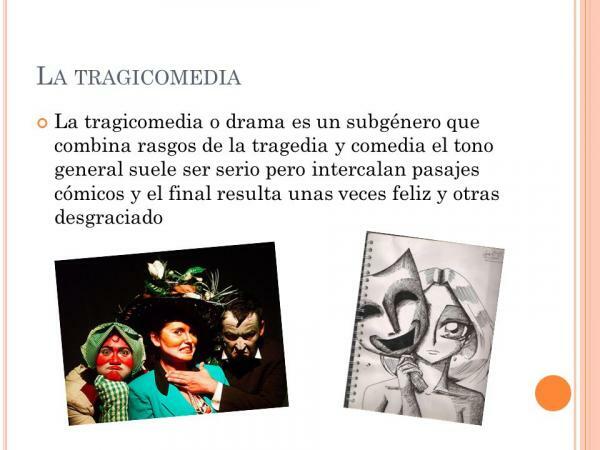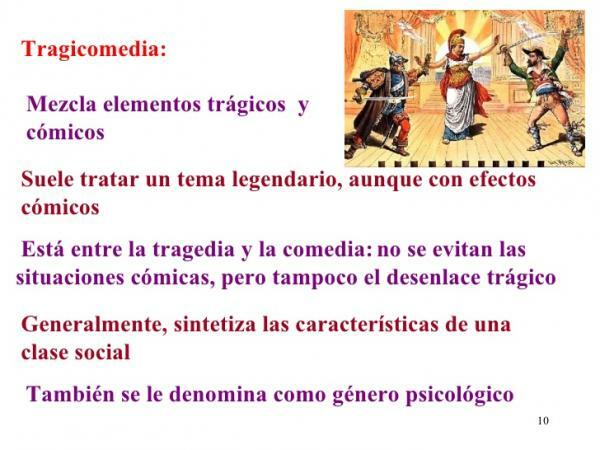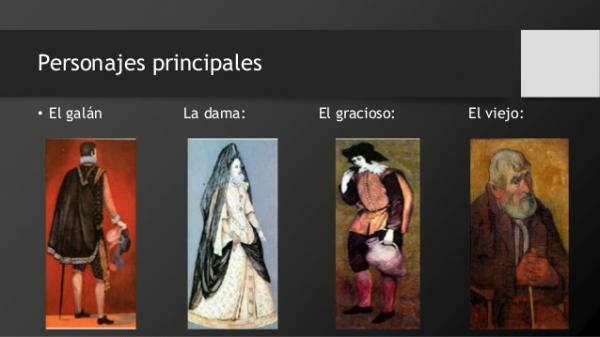The main FEATURES of TRAGICOMEDIA

Image: Features.pro
Surely you have heard of tragicomedy more than once, right? It is a literary genre that, as its name suggests, mix tragedy and comedy achieving a bitter and very critical result. One of the greatest exponents of this genre in the Spanish language is the work of "La Celestina" by Fernando de Rojas, however, many authors have followed this trail. In this lesson from a TEACHER we are going to show you the main characteristics of the tragicomedy so that you can know in detail which are the most typical elements of the genre.
But before going fully into talking about the characteristics of tragicomedy, it is important that we understand what this literary genre consists of. As its name suggests, a tragicomedy is a work that mixes elements of tragedy and comedy to offer a different result and with its own personality. Normally, these pieces are usually inscribed within the realistic literature since they aim to reflect some social group that is part of society in a comical and tragic way at the same time.
The basis of this genre focuses on a fusion of opposites that offers a very striking and full of satire. Therefore, most of these works have a critical sense that seeks to make fun of some aspect of society and give it a painful and funny touch at the same time. We have to know that tragicomedy is a genre that was created in the Ancient Greece and, in the works of then, they used to treat of legendary subjects. Aristotle was the first author to describe this genre from a theoretical point of view but it was not until the publication of Plautus' "host" that this genre had the first written exponent.
However, the modern tragicomedy is due to Lope de Vega thanks to his treaty The New Art of Making Comedies. Here, the Golden Age playwright opted for a renovated theater that broke with some of the classical norms of classical Greece. One of Lope's great contributions was the practice of tragicomedy with a critical will about society and that he transmitted a message to all viewers.

Image: SlidePlayer
To better understand this genre, below we are going to discover all the characteristics of the tragicomedy that will help you understand all the peculiarities of these works. As we have already commented above, it was Aristotle who stipulated the theory of this genre but it was not until Plautus that the first tragicomic work in the history of literature was established. Other authors who have created great examples of tragicomedy have been Molière, Shakespeare or Lope de Vega.
Mix of tragedy and comedy
It is one of the most obvious tragicomedy characteristics: the mixture of tragic and comic elements. This union of opposites makes the work appear with a more ironic and sarcastic tone that is perfect for the author to launch a criticism in a soft and indirect way.
Importance of sarcasm
Due to the fact that two elements as opposite as tragedy and comedy are mixed, the general tone of these works is sarcasm. The author can take advantage of gender to be able to criticize some element of society or morality dislike and do it with a style that sometimes will make us laugh, and other times will make us shake.
Strong ending
Depending on the development of the play, the character will end up having a positive or negative ending. That is, if throughout the play he has had a comic life, the end will be tragic and vice versa. The union of the two opposites is what will make the protagonist's story provide a much more forceful and effective message. However, in general, tragicomedy works tend to have a happy ending and a complicated path full of obstacles.
Realistic characters
Another characteristic of the tragicomedy is that the characters are quite realistic. The reason is that the work aims to launch a critical message and, therefore, it is important that the reader or viewer can quickly detect what type of character is being presented. This is reinforced through the use of a language adapted to each social class and that will present dialect, colloquial elements, etc.
Universal themes
Normally, tragicomedy works talk about universal themes such as justice, honor, love, and so on. The protagonist will have to go through a series of complicated situations full of obstacles so that, in the end, he achieves his mission, not without first having tried his best.
The character of the funny
An element of Lope de Vega's theater was the incorporation of the funny man, a character whose objective was to put a humorous counterpoint to the situation. This character was often played by the servant and gave more relaxation to the protagonist who, in general, is the one who experiences the misfortunes of the tragedy.

Image: Slideshare
If you want to know the characteristics of the tragicomedy, you also have to take into account which are the most traditional characters of this literary genre. Although each author can build his work with the characters he wishes, the truth is that traditionally these works were composed of the following:
- Galán / Protagonist: he is usually the one who embodies the classic hero ideal. A young man, brave and of good social class who is in love or who has a relationship with a woman, also idealized. He is the character who usually experiences situations typical of tragedy with a happy destiny that will be difficult for him to reach.
- Second heartthrob / Antagonist: Normally, in tragicomedy works the figure of an antagonist also appears, another gallant who It also meets the peculiarities of the ideal of a hero but has some motivations negative. Revenge, envy or jealousy are usually the engines that move the gallant who, in these cases, would represent the "vile" of the work.
- Lady: she is the main woman of the tragicomedy and usually fulfills the ideal of a woman. Young, pretty, innocent and from a good family, he plays the role of the protagonist's lover.
- Wise: It is traditional, too, that the figure of a wise character appears in tragicomedies. Normally, he is usually an older man and he may be the father or relative of one of the protagonists. She is the voice of wisdom that helps the story unfold and end happily.
- The servants: They are another of the traditional characters of the tragicomedy and are usually the companions of the protagonists of the work, both the gallant and the lady. They are his advisers and are usually represented in a language typical of their social class.
- The funny: and, as we have already said in the previous section, the funny man is another of the characters that are never lacking in these works. Many times he is represented by the servants and is in charge of giving a comic touch to the work with jokes and funny situations.

Image: Slideshare
One of the great examples of tragicomedy in the Spanish language is La Celestina. This anonymous work that was continued by Fernando de Rojas scrupulously complies with the characteristics that we have just mentioned about the genre of tragicomedy. In fact, the very subtitle of "La Celestina" is "Tragicomedy of Calisto and Melibea".
It is an exemplary example of how the mixture of the comic and the tragic can work. A hybrid work that tells the story of two lovers who live a love story thanks to the intervention of a pimp. The end of this piece is tragic since the two lovers end up dying. We see the comic touch throughout the plot as we find funny deceptions, mocking characters and situations full of comedy.



